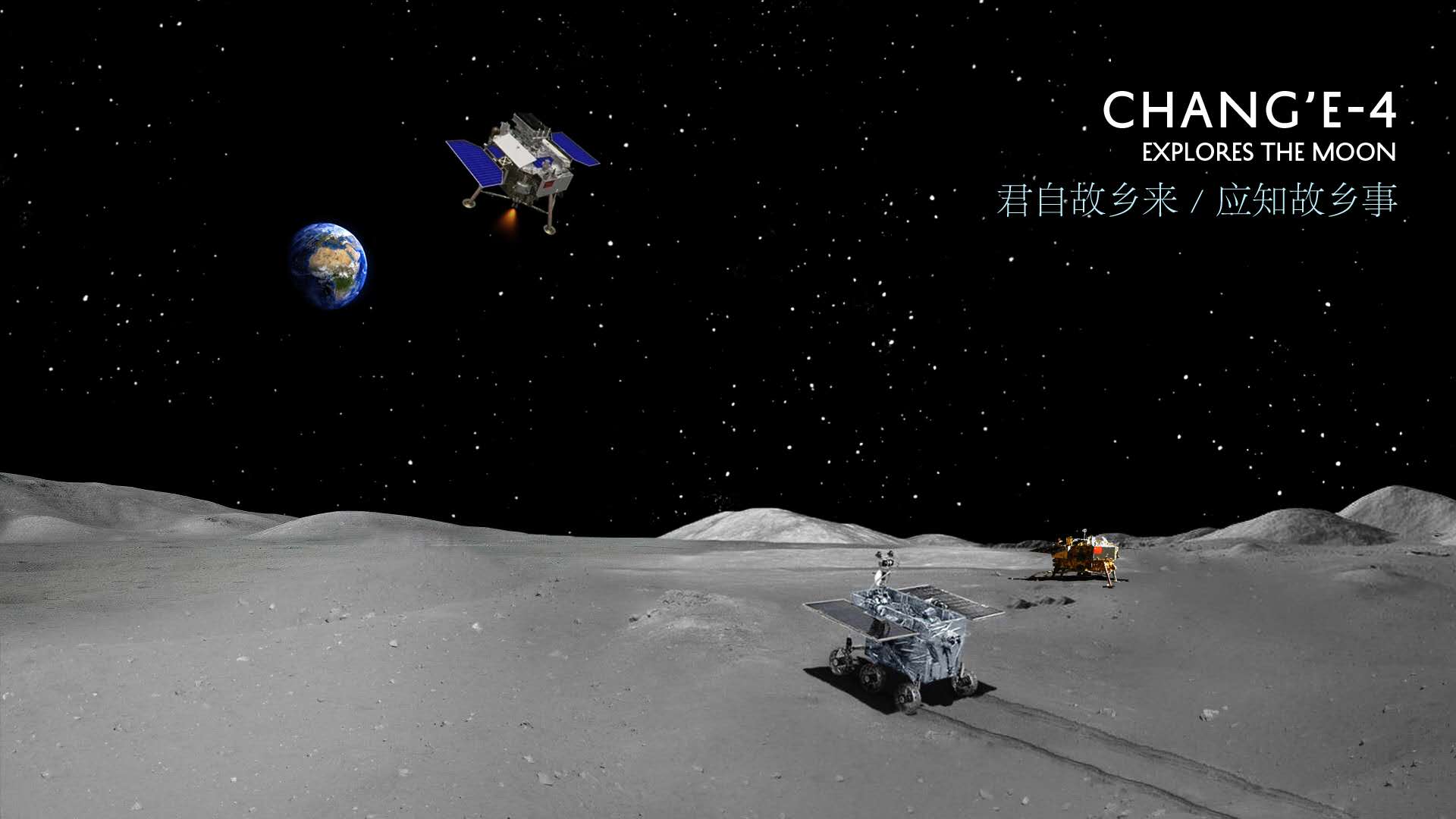Rapid Fire Quiz Chang’e and Yutu

From the first visit by Luna-1 in 1959 to the soft landing of Chang’e-4 in 2019, lunar exploration has spanned 60 years, yet unknown realms still wait to be discovered. Let’s see what Jia Yang, deputy chief designer of the Chang’e-4 probe and chief designer of the Yutu lunar rover, has to say about Chang’e and Yutu.

Chang’e-4 was originally built as a backup for Chang’e-3. Why did the spacecraft head for the far side of the moon alone instead of “uniting” with its predecessor?
It’s true that multiple routes were mapped out for Chang’e-4 including a second exploration near the landing site of Chang’e-3. But we ultimately decided to land the spacecraft on the far side of the moon. The reason behind the decision was simple: Although man had explored the moon several times, landing on the moon’s far side represented an unprecedented feat.
If there is no evidence of aliens or extraterrestrial spacecraft on the far side of the moon, what exactly is there?
The moon is an ancient celestial body. It was active three billion years ago, but now the body is still. Landing on the far side of the moon provides us clues about its evolution, which greatly contributes to the study of the early history of the moon and Earth.
A lunar night apparently lasts for two weeks. During the period, are the Chang’e-4 lander and the Yutu-2 lunar rover sleeping in the darkness?
Without solar energy during the lunar night, both the lander and the rover lose power and “fall asleep.” During those frigid hours, internal instruments emit heat which helps them survive the night.
Instead of using caterpillar tracks, why was Yutu-2 designed as a six-wheeled rover? If Yutu-2 tips over, can it get up by itself?
Yutu-2’s “feet” were indeed an important design feature that was discussed at length. We gave up on the plan for caterpillar tracks because they proved less maintainable. For instance, if a small stone gets stuck in the track, the rover would be stuck. In contrast, wheels are reliable and resource-saving. If Yutu-2 tips over, it cannot stand up again. The solar panels on the back of the lunar rover are fragile and will crack or become contaminated with dirt if it falls down, which would render it completely useless. So, our focus was to keep it standing and prevent it from falling.
With the help of the Queqiao relay satellite, is it possible to broadcast live from the surface of the moon’s far side?
In theory, it is possible, but current communications links cannot meet the requirements for live video streaming.
How long will Yutu-2 work on the moon? How far can it go?
Its designed life expectancy is about three months. We certainly hope that Yutu-2 will journey further than its predecessor.
Will Yutu-2’s tracks stay on the moon forever?
That depends on the definition of “forever.” The marks will remain for at least hundreds of thousands of years.
What can the lunar rover send back to Earth from the far side of the moon?
Yutu-2 carried several scientific payloads to study the geophysics of the landing zone including soil stratification, soil temperature, mineral elements and other things.
How far apart are China’s two Yutu lunar rovers on the moon? Is it possible for them to meet? Will more Yutu rovers be sent to the moon?
The two Yutu lunar rovers are respectively on the near side and far side of the moon, the furthest possible distance from each other. It is likely that they will never meet. In the future, I hope there will be more Yutu rovers on the moon and on other celestial bodies as well.
What is your opinion on extraterrestrial civilizations?
The universe is vast, and human beings are probably not alone. But contact between two civilizations may still be distant. Current human technology cannot establish communication with extremely far places.